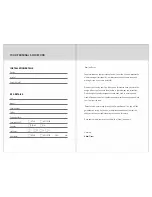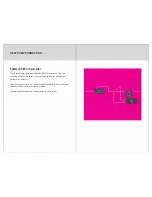
SPA POOL MAINTENANCE
If you own a spa pool or hot tub, it is important to understand that it requires a
certain amount of owner maintenance to ensure it operates properly and that the
water remains clean and healthy. The water treatment requirements for a spa pool
differ from those for a swimming pool, because you are dealing with hot water.
Hot water requires different treatment to prevent the growth of bacteria and algae.
The correct use of chemicals will maintain the water in a clean and healthy
condition. The parameters that need to be regularly checked are, total alkalinity,
pH and sanitiser level. Your local spa retailer should be able to supply a suitable
test kit and advise on its correct use. It is advisable to test the water on a
daily basis.
SPECIAL NOTE:
Do not mix chemicals
Do not add water to the chemicals, only add chemicals to the water
Changing the water
The spa water should be changed every three to four months, or remove and
replace approx 30% or 1/3 of the volume of water every three to four weeks.
Total alkalinity
The total alkalinity should be in the range of 90 - 150 ppm (parts per million).
A spa or hot tub with low total alkalinity would require constant adjustment of
the pH. To raise total alkalinity, add sodium bicarbonate in small quantities.
To lower the total alkalinity, add acid (Dry Acid Sodium Bisulphate) in small
quantities. Test in one hour.
The pH level
pH is the measure of the acid/alkaline level of the water. It is important to
maintain the correct pH level as iteffects the action of other chemicals.
The pH is measured on a scale of 1 to 14. Seven is neutral, below seven is
acidic, and above seven isalkaline.
Incorrect pH levels can cause poor sanitiser efficiency, eye and skin irritations,
corrosion ofmetal fittings, cloudy water and formation of scale on the pool walls
and fittings. The pH should always be above 7.0 (measured at room temperature,
not hot) to avoid possible corrosion of equipment. However, itshould not be
higher than 7.8, as this would reduce the efficiency of the sanitiser.
If the pH level needs to be increased, add soda ash; to reduce the pH level,
add dry acid. Wait for one-hour and test again.
Sanitising the spa
Sanitising your spa is essential for safe, healthy water, free of harmful
micro-organisms. The most commonly used sanitiser for spa pools is a form
of chlorine (Lithium Hypochlorite). Ozone may also be used, but because there
can be no residual, a form of chlorine must be used in conjunction with it.
The amount of disinfectant required depends on a number of factors, including,
water temperature, the frequency of use and the number of people using the
spa. It is most important to always keep the sanitiser level at 2.00 to 3.00 ppm.
In very hot water the sanitiser can be used up very quickly, and should be
checked regularly whilst the spa is being used.
After heavy use of the spa or on a weekly basis, the water should be shock dosed
with sanitiser. Be sure to check the level again before use. If the spa or hot tub is
not being used, add sanitiser every second day to prevent contamination.































